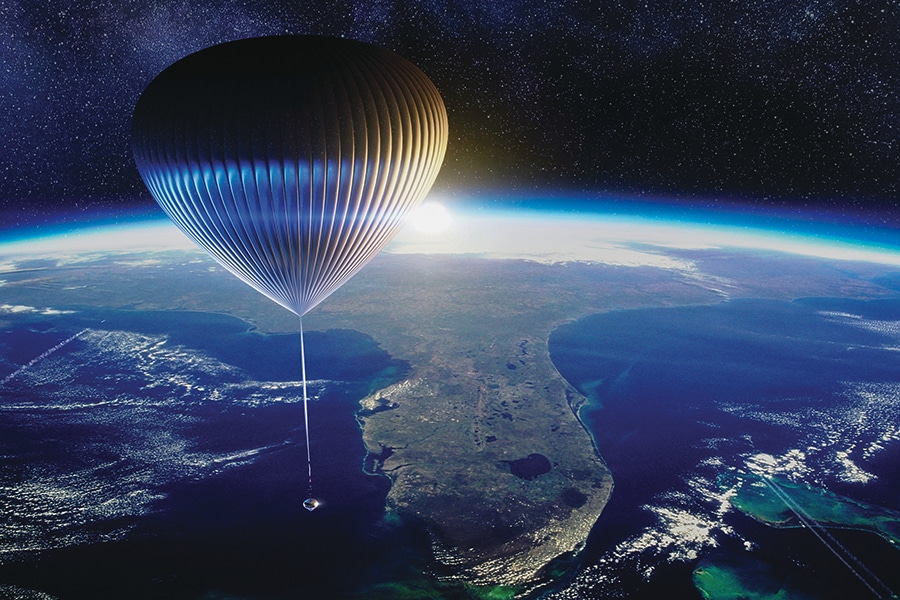
Space balloon rides: Will they work this time?
Seven years ago, entrepreneurs planned trips to the stratosphere, but tourists never got off the ground. They're trying again
 In a concept illustration provided by the company, the Spaceship Neptune, which Space Perspective hopes to operate as a space tourism venture. The balloon journey to the stratosphere, about 19 miles off the ground — would be high enough to view the blackness of space and the curvature of a round Earth.
In a concept illustration provided by the company, the Spaceship Neptune, which Space Perspective hopes to operate as a space tourism venture. The balloon journey to the stratosphere, about 19 miles off the ground — would be high enough to view the blackness of space and the curvature of a round Earth.
Image: Space Perspective via The New York Times
Nearly seven years ago, two entrepreneurs unveiled a company, World View, that would take tourists on a gentle balloon journey to the stratosphere, about 19 miles off the ground — high enough to view the blackness of space and the curvature of a round Earth.
Those journeys never happened. But on Thursday, those same entrepreneurs are back again, announcing the start of a new company with a similar sounding name, Space Perspective, to offer the same vision.
Despite years of promises, the business of space tourism largely remains a dream of the future. Although seven ultrawealthy people have spent tens of millions of dollars each to visit the International Space Station, companies aiming to open up outer space to more people have yet to lift a single paying passenger.
The founders of Space Perspective insist that their business plan is sound — offering the sights of space to those who would prefer a leisurely, hourslong cruise to a giant roller coaster ride where the excitement is over in minutes.
“It’s so gentle,” said Jane Poynter, who shares the chief executive title with her husband, Taber MacCallum, at the new company. “It’s much less dynamic than a rocket-based flight. I know that there’s a lot of people that either cannot or don’t want to go on a rocket, but they really want to go to space.”
©2019 New York Times News Service




